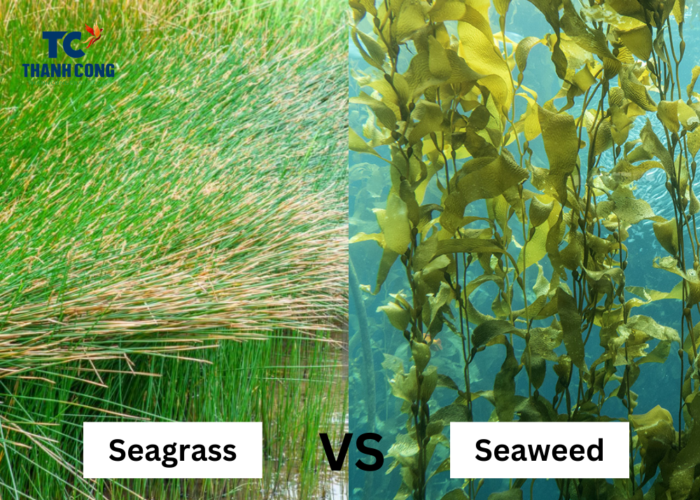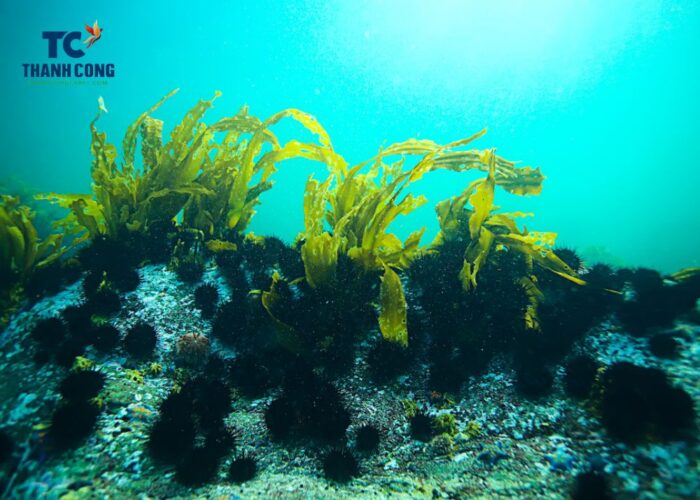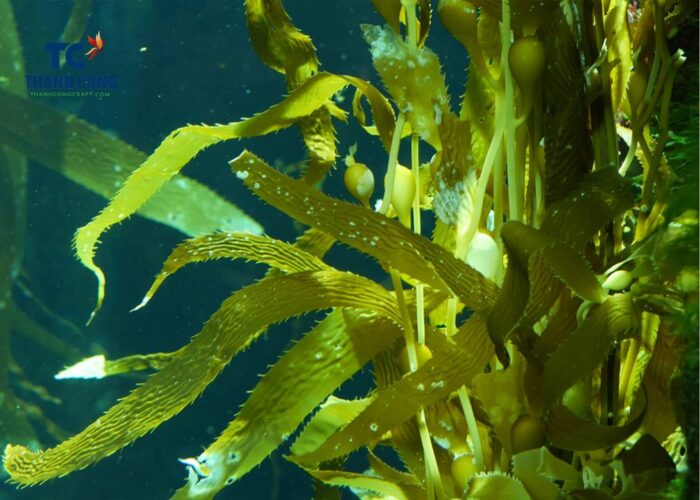Seagrass and seaweed are often easily confused at a glance or for those without experience. Seagrass and seaweed are two types of plants that live underwater, but they differ significantly in terms of structure, physiology, and ecology.
In this article, we will delve deeper into the difference between seagrass and seaweed. Have a read!
Contents [hide]
1. Are Seagrass And Seaweed The Same?
Seagrass and seaweed are not the same. While both are aquatic plants that thrive underwater, they differ in terms of structure, physiology, and ecological roles. Seagrass has true roots, stems, and leaves, resembling terrestrial plants adapted for underwater life.
In contrast, seaweed lacks these structures and exhibits a variety of forms such as blades, holdfasts, and floats. Their habitats, reproductive strategies, and ecological functions also vary, highlighting the distinct nature of seagrass and seaweed.

2. The Difference between Seagrass And Seaweed
Seagrass is a type of flowering plant that is adapted to grow in marine environments. Seaweed, on the other hand, is a type of algae.
Seagrass belongs to the Cyperaceae. It has true roots, stems, and leaves. While Seaweed (Algae) is a simple, non-vascular plant and does not have true roots, stems, or leaves.
The difference between seagrass and seaweed encompasses various aspects, including their botanical structures, habitats, and ecological functions. Let’s delve into a more detailed explanation:
2.1 Botanical Structures
- Seagrass: Seagrass is a plant that thrives in damp environments, featuring stems, roots, and leaves. Its roots typically reach a depth of 0.50-1 meter, and the stem is slender, smooth, and can grow up to 1-2 meters in height.
- Seaweed: Lacks true roots, stems, and leaves. Instead, it showcases diverse structures such as blades, holdfasts, and floats. Seaweed exhibits considerable variation in form and morphology.
2.2 Habitats
- Seagrass: Typically found in shallow coastal waters, often rooted in sandy or muddy ocean floors. It thrives in environments where it can anchor itself.
- Seaweed: Exhibits versatility in habitat, ranging from intertidal zones to deep-sea environments. Seaweeds can attach to rocks or other substrates, showcasing adaptability to different conditions.

2.3 Ecological Functions
- Seagrass: Plays a crucial role in stabilizing sediments by trapping and binding particles. It provides habitats for a diverse range of marine species, contributing to biodiversity. Additionally, seagrass is involved in carbon sequestration, helping mitigate climate change impacts.
- Seaweed: Serves various ecological functions, acting as a habitat, food source, and contributing to nutrient cycling. Some types of seaweed are also important in human consumption and industrial applications.
2.4 Reproduction
- Seagrass: Primarily reproduces through flowering and seed production. The reproductive strategy is more analogous to that of terrestrial plants.
- Seaweed: Employs various reproductive strategies, including spore release and fragmentation. The reproductive mechanisms vary among different types of seaweed.
2.5 Adaptations to Underwater Life
- Seagrass: Adapted with features to withstand underwater conditions, such as the ability to anchor itself in sediment and long, flexible leaves that sway with ocean currents.
- Seaweed: Exhibits adaptations for buoyancy, with air-filled floats or structures that help keep parts of the plant near the water’s surface for optimal light exposure.
3. The Similarities between Seaweed And Seagrass
Despite their apparent differences, seaweed and seagrass share commonalities that weave them into the underwater tapestry of marine ecosystems. Here are key similarities between these two submerged botanical entities:
3.1 Aquatic Habitats
Thriving in aquatic environments, both seaweed and seagrass are found in a range of settings, from intertidal zones to deep-sea areas. They often attach to substrates such as rocks or other marine structures, and seagrass is well-adapted to living fully submerged in saltwater environments.

3.2 Photosynthetic Nature
Seaweed and seagrass engage in photosynthesis, utilizing sunlight to produce energy. This shared characteristic underscores their dependence on light as a fundamental energy source.
3.3 Contribution to Marine Ecosystems
Both seaweed and seagrass play essential ecological roles. They provide habitats for various marine species, contribute to nutrient cycling, and serve as primary food sources for some underwater organisms. Their collective impact is vital to the overall health of marine ecosystems.
3.4 Underwater Adaptations
Seaweed and seagrass feature adaptations for underwater life. They both have long, flexible leaves that sway with ocean currents, enhancing their ability to thrive beneath the surface. Additionally, their roots are designed for anchoring in the substrate, providing stability in their underwater habitats.
4. Additional Informations
4.1 What Is Seagrass?
Cyperus, commonly known as seagrass, belongs to the Cyperus genus. Seagrass is a type of plant that thrives in wet areas, with rhizomes and tuberous roots (often referred to as seagrass tubers) growing at a depth of 0.50-1m.
It has slender stems, growing erect and reaching a height of 1-2m. In Vietnam, seagrass is cultivated and grows wild along the coast, mangrove in the northern provinces from Quang Ninh to Thanh Hoa and along the coast of the Central South provinces in Vietnam.

Seagrass is primarily used to make Seagrass Baskets , hats, mats, and various handicrafts. Nowadays, due to the positive reception of seagrass products by consumers, these items have become increasingly diverse in design on the market to meet customer demands.
4.2 What is Seaweed?
Seaweed, also known as algae, comes in a variety of colors, ranging from red and brown to green. This type of algae adapts to both saline and brackish environments, often growing on rocky surfaces, coral reefs, or underwater in conditions where sunlight can penetrate to facilitate photosynthesis.

Seaweed commonly grows along coastlines worldwide. Despite being considered a distinctive food of Asia, frequently used in Korean and Japanese cuisines, seaweed is a nutritional treasure that the ocean provides to humans. Seaweed is rich in vitamins, minerals, and essential trace elements beneficial for health. In fact, the nutrient content in seaweed is often higher than that in most other types of food.
Summary
In conclusion, understanding the difference between seagrass and seaweed enhances our appreciation for their ecological importance. While seagrass provides stability and habitat complexity in coastal areas, seaweed adds to the intricate balance of marine life. Both are crucial contributors to the health and biodiversity of the oceans, each with its unique role in sustaining underwater ecosystems.
If you have any further questions, don’t hesitate to send thanhcongcraft an email us at info@thanhcongcraft.com or message us at WhatsApp: +84967485411. Hope to serve you soon! Best regard!


